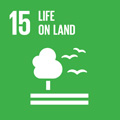- Docente: Lisa Borgatti
- Credits: 9
- SSD: GEO/05
- Language: Italian
- Moduli: Lisa Borgatti (Modulo 1) Lisa Borgatti (Modulo 2)
- Teaching Mode: Traditional lectures (Modulo 1) Traditional lectures (Modulo 2)
- Campus: Bologna
-
Corso:
First cycle degree programme (L) in
Environmental Engineering (cod. 9198)
Also valid for First cycle degree programme (L) in Techniques and Management for Construction and Land (cod. 6008)
-
from Sep 16, 2024 to Nov 13, 2024
-
from Nov 18, 2024 to Dec 18, 2024
Learning outcomes
Learning some basic concepts for the understanding of geologic bodies, and rocks that constitute them. Reading and interpreting the geologic elaborates. Learning some notions of applied geology, essential for the correct use of engineering techniques in the field of civil works, with particular reference to geologic hazards.
Course contents
Requirements/Prior knowledge
A high-school level understanding of physics, inorganic chemistry and physical geography is required to attend with profit this course. In addition, students are recommended to get acquainted with the dynamics of the Earth on high-school textbooks. Fluent spoken and written Italian are necessary pre-requisites, since all lectures, tutorials and study material are in Italian.
Course Contents
The first module of this course gives the student basic information on the following subjects: (a) identifying rocks and soils in hand samples as well as outcrops; (b) reading and interpreting geologic maps, stratigraphic schemes and geologic cross-sections; (c) estimating the effects of the geodynamic processes on volcanic, seismic and alluvial hazard and risk.
The second module of this course is mainly about landslide hazard and risk, with emphasis on the interpretation of large-scale geomorphologic maps, the monitoring techniques and the mitigation measures.
At the end of the course, the student is expected to understand terminology and contents of the geologic elaborates required for the planning of engineering works.
Readings/Bibliography
Introduction to Earth Sciences:
JORDAN T.H., GROTZINGER J.P., Capire la Terra, Zanichelli, 2016.
Course text:
SCESI L., PAPINI M., GATTINONI P., Principi di geologia applicata, Casa Editrice Ambrosiana, 2014.
Complementary teaching material will be made available in Virtuale.
Teaching methods
Lectures and practical exercises in small groups, videos, seminars by experts.
In order to allow students to verify their learning in the field, educational trips will be organized near the end of the course in the southern Alps and/or in the northern Apennines.
Assessment methods
The assessment is carried out through a written test consisting of open questions and multiple-choice questions with penalties for wrong or omitted answers, with a total duration of 90 minutes.
Passing the tests is guaranteed for students who demonstrate knowledge of the origin of the rocks and cartographic objects. A higher score is awarded to students who understand the technical issues inherent in the rocks and cartographic objects they have described. Failure to pass one or both tests may be due to insufficient knowledge of key concepts, possibly compounded by poor command of technical language.
Teaching tools
The lessons are conducted using the equipment available in the classroom and cartographic materials.
Office hours
See the website of Lisa Borgatti
SDGs



This teaching activity contributes to the achievement of the Sustainable Development Goals of the UN 2030 Agenda.
